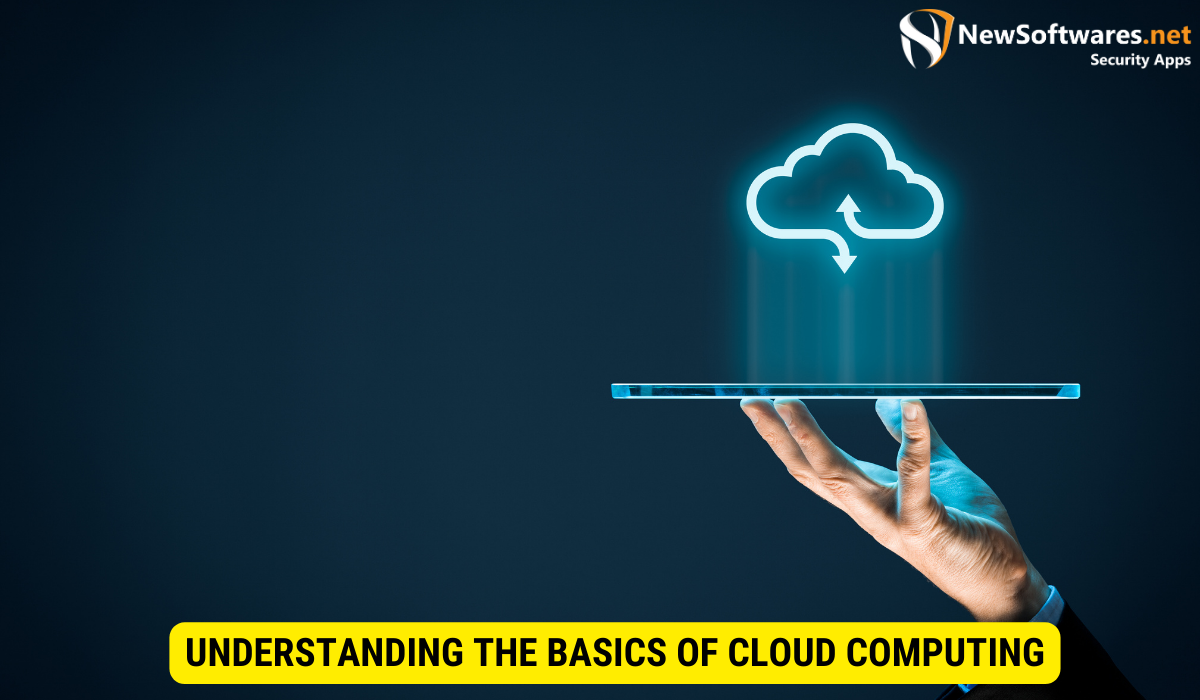Security Concerns: Data location and segregation in cloud computing are critical considerations to protect sensitive information. Data encryption, access control, and compliance with data protection laws are key factors in mitigating security risks. Understanding the impact of data location, implementing encryption measures, and effective data segregation are vital for organizations leveraging cloud computing.
Cloud computing has become a vital component of modern businesses, offering benefits such as scalability, cost efficiency, and accessibility. However, alongside these advantages come security concerns, particularly regarding data location and segregation. Understanding the basics of cloud computing is crucial in comprehending the significance of these concerns.
Understanding the Basics of Cloud Computing

Cloud computing can be defined as the practice of using a network of remote servers, hosted on the Internet, to store, manage, and process data. It allows businesses to access their applications and data remotely, without the need for physical infrastructure or local storage.
Cloud computing has revolutionized the way businesses operate by providing a scalable and flexible solution for their computing needs. With cloud computing, organizations can easily scale their resources up or down based on demand, ensuring optimal performance and cost efficiency.
Furthermore, cloud computing offers businesses the ability to access their applications and data from anywhere in the world, as long as there is an internet connection. This level of accessibility has greatly enhanced collaboration and productivity, as employees can work remotely and still have access to all the necessary tools and information.
Defining Cloud Computing
Cloud computing encompasses various service models, including Infrastructure-as-a-Service (IaaS), Platform-as-a-Service (PaaS), and Software-as-a-Service (SaaS). Each model offers different levels of control and flexibility to businesses.
In the IaaS model, businesses have the most control over their infrastructure. They can rent virtualized hardware resources, such as servers and storage, and have complete control over the operating systems and applications running on those resources.
PaaS, on the other hand, provides businesses with a platform on which they can develop, run, and manage their applications. This model eliminates the need for businesses to worry about the underlying infrastructure and allows them to focus solely on their applications.
SaaS is the most user-friendly cloud computing model, as it provides businesses with ready-to-use software applications. With SaaS, businesses can access applications directly through a web browser, without the need for installation or maintenance.
The Importance of Data Location and Segregation in Cloud Computing
One of the key concerns in cloud computing is the physical location of data. Data is stored in data centers around the world, and organizations must understand where their data is located to comply with data protection regulations and ensure its security.
Knowing the exact location of data is crucial for businesses, especially when dealing with sensitive information. Data protection regulations vary from country to country, and organizations must ensure that their data is stored in jurisdictions that provide adequate protection and comply with applicable laws.
Additionally, data segregation plays a crucial role in protecting sensitive information. Without proper segregation, unauthorized access to data in the cloud can result in breaches and data loss. Cloud service providers employ various security measures, such as encryption and access controls, to ensure data segregation and prevent unauthorized access.
Organizations should also consider implementing additional security measures, such as multi-factor authentication and data encryption, to further enhance the security of their data in the cloud.
In conclusion, cloud computing has revolutionized the way businesses store, manage, and process data. With its scalability, accessibility, and flexibility, cloud computing offers businesses a cost-effective and efficient solution for their computing needs. However, organizations must also consider the importance of data location and segregation to ensure compliance with regulations and protect sensitive information in the cloud.
Delving into Security Concerns in Cloud Computing
Cloud computing has revolutionized the way organizations store and process data. However, with this convenience comes a host of security concerns that need to be addressed. Identifying key security risks and understanding the role of data encryption are crucial steps in mitigating these concerns.
Identifying Key Security Risks
When it comes to cloud computing, there are several common security risks that organizations need to be aware of. Unauthorized access is a major concern, as it can lead to sensitive data being exposed to malicious actors. Additionally, data breaches are a significant risk, with cybercriminals constantly looking for vulnerabilities to exploit. Data loss is another potential issue, whether due to accidental deletion or a catastrophic event. Finally, service disruptions can occur, impacting the availability of data and services.
Organizations must take proactive measures to mitigate these risks. Implementing robust security measures and protocols is essential. This includes conducting regular security audits, implementing strong access controls, and monitoring for any suspicious activity. By staying vigilant and proactive, organizations can minimize the likelihood of falling victim to these security risks.
The Role of Data Encryption in Cloud Security
Data encryption plays a crucial role in ensuring the confidentiality and integrity of data stored in the cloud. Encryption involves converting data into a format that can only be read with a decryption key. This provides an additional layer of protection, making it extremely difficult for unauthorized individuals to access sensitive information.
Organizations should implement encryption techniques both during data transfer and storage. During data transfer, using secure protocols such as SSL/TLS ensures that data is encrypted while in transit. This prevents eavesdropping and unauthorized interception of data. When it comes to data storage, encrypting data at rest ensures that even if the physical storage medium is compromised, the data remains secure.
There are various encryption methods available, including symmetric and asymmetric encryption. Symmetric encryption uses a single key for both encryption and decryption, while asymmetric encryption uses a pair of keys – a public key for encryption and a private key for decryption. Organizations should carefully evaluate their specific needs and choose the encryption method that best suits their requirements.
It is important to note that while data encryption is a powerful security measure, it is not a standalone solution. It should be used in conjunction with other security measures, such as strong access controls, regular security updates, and employee training on best security practices.
In conclusion, security concerns in cloud computing are a reality that organizations must address. By identifying key security risks and understanding the role of data encryption, organizations can take proactive steps to mitigate these concerns. Implementing robust security measures and protocols, along with data encryption, will help ensure the confidentiality, integrity, and availability of data stored in the cloud.
The Intricacies of Data Location in Cloud Computing
Data location plays a crucial role in cloud security. Understanding how data location impacts security and implementing effective data location management strategies are vital for organizations.
How Data Location Impacts Security?
Data stored in different jurisdictions may be subjected to varying data protection laws and regulations. Organizations must consider these factors when choosing cloud service providers and ensure compliance with applicable regulations.
Strategies for Effective Data Location Management
Organizations can implement strategies such as geolocation tools, data mapping, and contractual agreements with cloud service providers to effectively manage data location. These strategies enable organizations to maintain control over their data and enhance security.
The Significance of Data Segregation in Cloud Computing
Data segregation is crucial in preventing unauthorized access and protecting sensitive information. Understanding its importance and implementing effective data segregation measures are essential for organizations utilizing cloud computing.
Understanding Data Segregation and Its Importance
Data segregation refers to the practice of separating data at various levels, such as logical, physical, and virtual, to ensure that it remains confidential and secure. Proper segregation prevents unauthorized access and limits the impact of a potential security breach.
Implementing Data Segregation for Enhanced Security
Organizations can implement data segregation measures such as access control, user permissions, and encryption to maintain data integrity and confidentiality. These measures contribute to a more secure cloud computing environment.
Mitigating Security Concerns in Cloud Computing

Implementing best practices for cloud security and staying updated with future trends are essential steps in mitigating security concerns in cloud computing.
Best Practices for Cloud Security
Some best practices for cloud security include regular audits of cloud service providers, implementing multi-factor authentication, conducting employee training on cloud security, and developing an incident response plan.
Future Trends in Cloud Computing Security
The field of cloud computing security is ever-evolving. Future trends include the adoption of advanced encryption algorithms, the use of artificial intelligence for threat detection, and the implementation of blockchain technology for data integrity assurance.
Key Takeaways
- Cloud computing offers scalability, cost efficiency, and accessibility, but it also comes with security concerns.
- Data location and segregation are significant factors in cloud computing security.
- Data encryption plays a vital role in protecting sensitive information in the cloud.
- Understanding how data location impacts security helps organizations make informed decisions.
- Data segregation measures, such as access control and encryption, enhance security in the cloud.
FAQs
Why is data location important in cloud computing?
Data location is crucial in cloud computing because it determines which jurisdiction’s data protection laws and regulations apply. Understanding the location of data helps organizations ensure compliance, data security, and legal requirements.
How can organizations ensure the security of data stored in the cloud?
To secure data in the cloud, organizations should employ encryption for data at rest and in transit, implement strong access controls, regularly audit cloud service providers, conduct employee training on cloud security, and have an incident response plan in place.
What are the key security risks in cloud computing?
Key security risks in cloud computing include unauthorized access, data breaches, data loss, service disruptions, and compliance violations. These risks can have significant consequences if not properly mitigated.
What strategies can organizations implement to manage data location effectively?
Organizations can use strategies such as geolocation tools, data mapping, contractual agreements with cloud providers, and compliance checks to effectively manage data location. These strategies help maintain control over data and enhance security.
What are the best practices for cloud security?
Best practices for cloud security include regular audits of cloud service providers, implementing multi-factor authentication, conducting employee training on cloud security, developing an incident response plan, and staying updated with evolving security trends in cloud computing.
Conclusion
In conclusion, as cloud computing continues to revolutionize the business landscape, organizations must remain diligent in addressing the security concerns associated with data location and segregation. By understanding the basics of cloud computing, identifying key security risks, implementing robust encryption measures, managing data location effectively, and practicing best security practices, businesses can mitigate these concerns and leverage the full potential of cloud computing with confidence.
